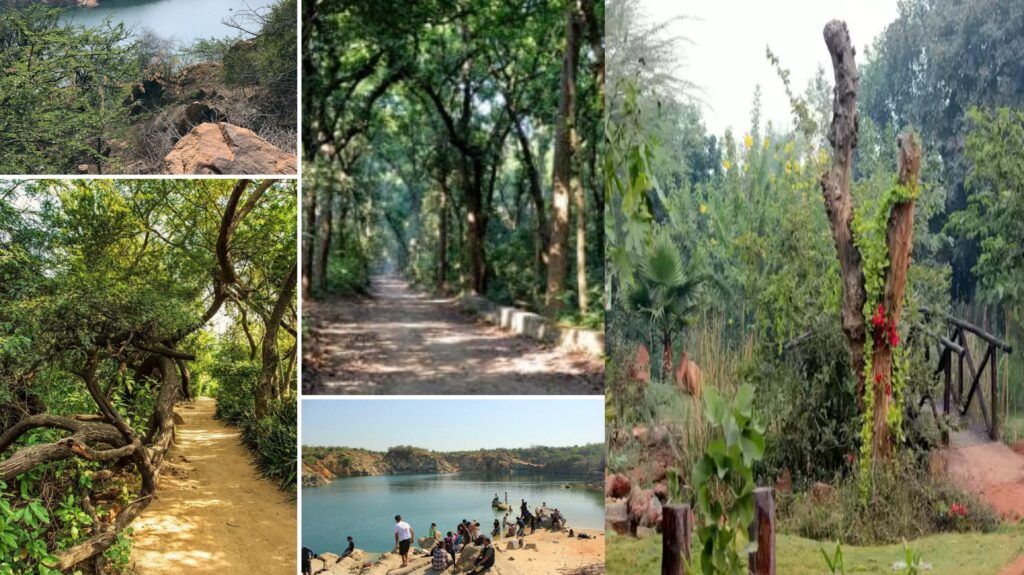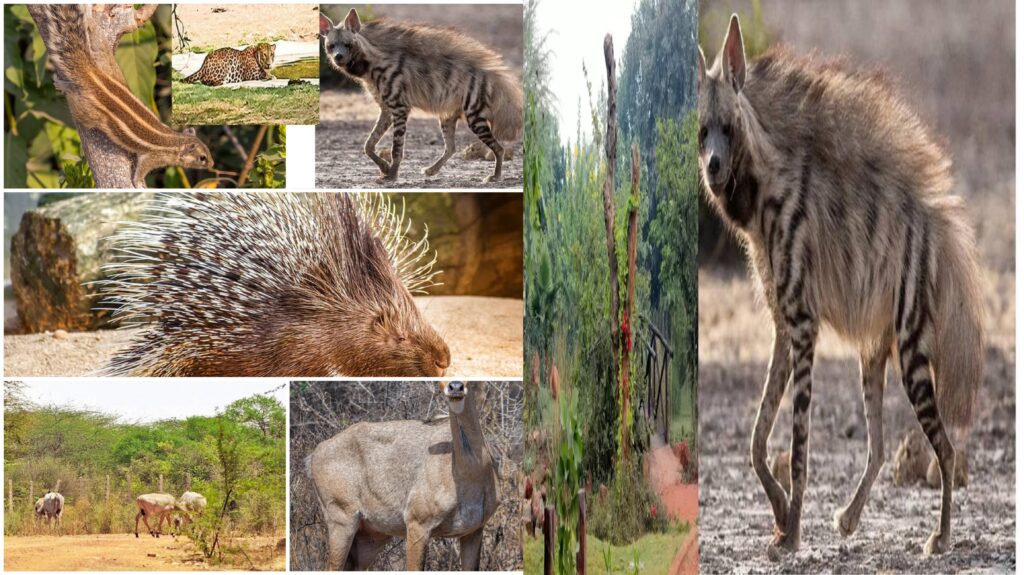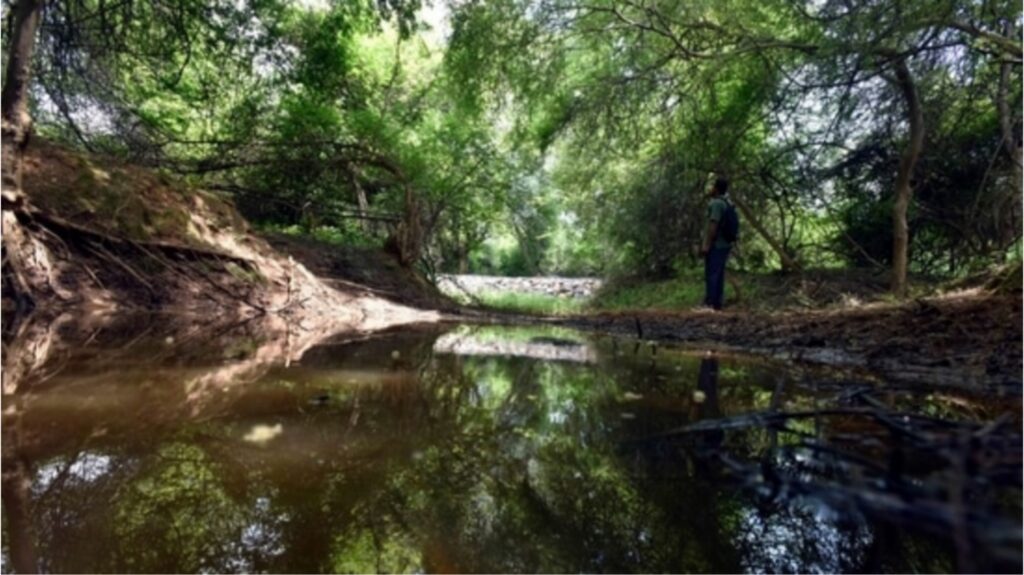
Asola-Bhati Wildlife Sanctuary is located on the Southern Ridge of Delhi, near the Aravalli hills. It was established in 1986 to conserve the Aravalli, The sanctuary covers an area of approximately 32.71 square kilometers. The sanctuary is home to a variety of flora, including indigenous trees like Dhak, Dhok, Khair, and Babool.
Here are some tourist attractions in Asola Bhati sanctuary –

1. Asola Bhati sanctuary hosts various wildlife species, including leopards, golden jackals, nilgai, blue bull, blackbuck, Indian Crested Porcupine, antelope, Macaque, Jungle cat, palm squirrel, hyenas, flying fox.

2. Asola Bhati sanctuary has 190 species of birds can be found here, making it a popular spot for birdwatching. The sanctuary is known for its diverse butterfly population.

3. Asola Bhati sanctuary also home to various reptiles, including monitor lizards, snakes, and turtles. . There are several man-made lakes and wetlands within the sanctuary, providing a habitat for aquatic birds.

4. Asola Sanctuary is part of the ancient Aravalli range, one of the oldest mountain ranges in the world. It helps in controlling pollution in Delhi by acting as a green lung. It serves as an educational site for students and researchers studying ecology and wildlife.

5. Asola sanctuary promotes eco-tourism, offering guided tours and nature trails. It acts as a wildlife corridor, connecting various habitats and allowing animal movement.

6. Various conservation projects are undertaken to protect and restore the biodiversity of the sanctuary. Efforts are made to control invasive species that threaten native flora and fauna.

7. The sanctuary plays a crucial role in groundwater recharge and water conservation. There is a dedicated butterfly park within the sanctuary.

8. Asola sanctuary experiences a semi-arid climate, with hot summers and mild winters. There is a visitor center providing information about the sanctuary’s flora and fauna. The sanctuary offers trekking routes for nature enthusiasts.

9. Educational programs and workshops are conducted to raise awareness about wildlife conservation. Injured and orphaned wildlife are rehabilitated and released back into the wild.
10. Gardens are maintained to support pollinators like bees and butterflies. The vegetation in the sanctuary helps in carbon sequestration, mitigating climate change.
11. The sanctuary provides various environmental benefits, including air purification and soil conservation.
12. Asola sanctuary is managed by the Department of Forests and Wildlife, Government of Delhi.Public Awareness Efforts are made to involve local communities in conservation and raise public awareness.